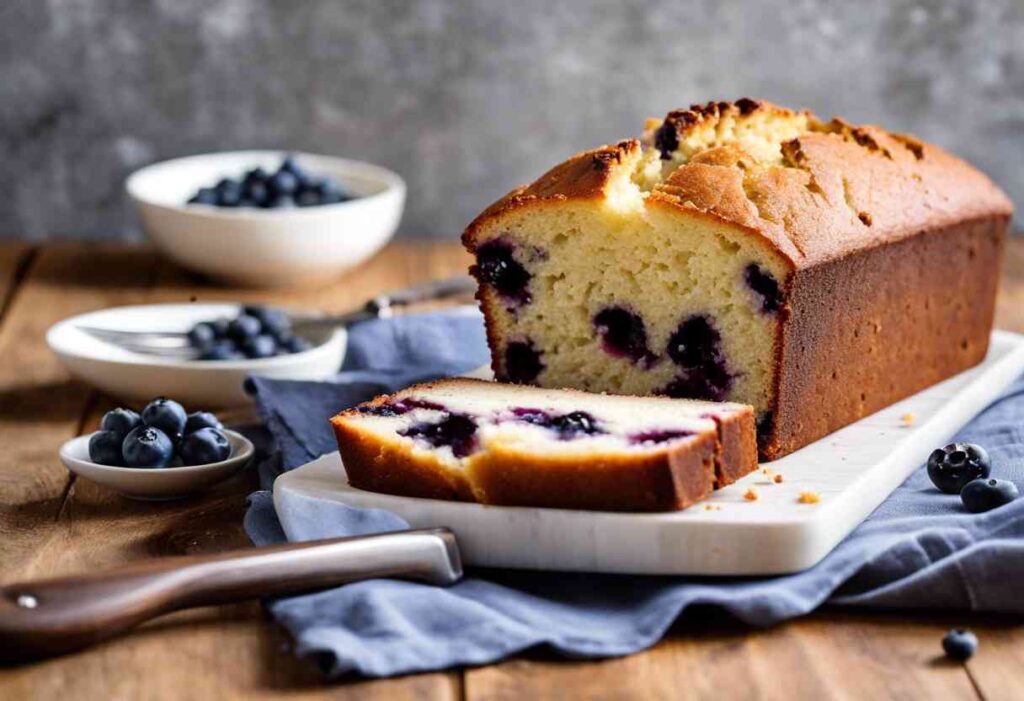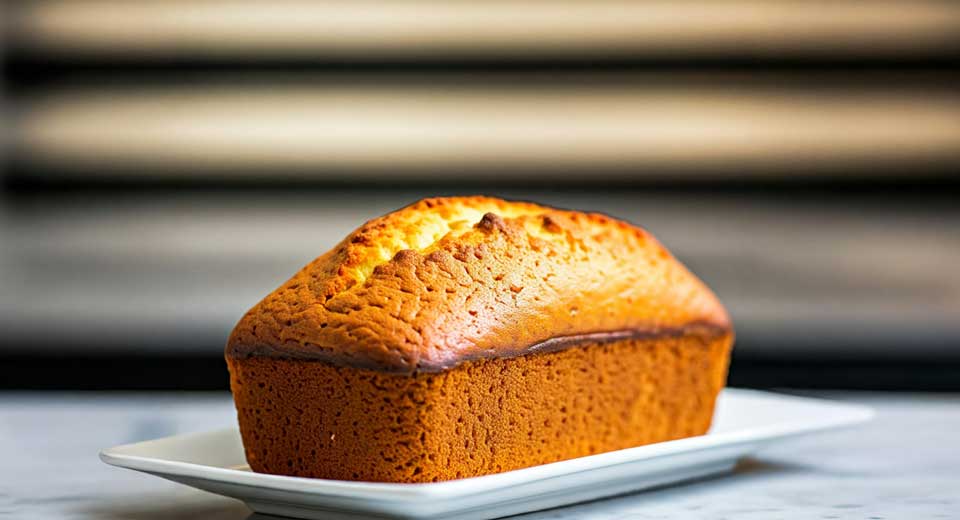Updated!
Learn the secrets to baking a flawless Loaf Cake in “The Ultimate Guide to Baking the Perfect Loaf Cake.” Expert tips and techniques for mouth-watering results every time!
Introduction to Loaf Cakes
Loaf cakes are a staple in the baking world, and these are known for their versatility and simplicity. These cakes are typically baked in a rectangular loaf pan, which gives them their characteristic shape. They can range from basic vanilla or chocolate to more complex flavors like lemon poppy seed or zucchini.
Key Characteristics
- Shape: Rectangular, easy to slice.
- Texture: Typically dense, but can vary based on ingredients.
- Flavor: Highly customizable with endless combinations.
Common Ingredients
- Flour
- Sugar
- Eggs
- Butter or oil
- Leavening agents (baking powder or baking soda)
Loaf cakes can be enjoyed plain or adorned with glazes, frostings, or toppings of choice.
Essential Ingredients for a Perfect Loaf Cake
A balanced selection of ingredients is crucial for a flawless loaf cake. Each element plays an integral role in texture and flavor. Key ingredients include:
- Flour: All-purpose flour provides the necessary structure.
- Sugar: Granulated sugar ensures sweetness and aids in browning.
- Butter: Unsalted butter imparts richness and moisture.
- Eggs: Eggs contribute to the cake’s leavening and bind ingredients.
- Milk: Whole milk hydrates the batter and adds tenderness.
- Baking powder: This leavening agent helps the cake rise evenly.
- Vanilla extract: Enhances the overall flavor with its aromatic quality.
Balanced proportions ensure consistency and superior results.

Tools and Equipment
A successful loaf cake requires the right tools and equipment. Essential items include:
- Mixing Bowls: Stainless steel or glass mixing bowls for durability and ease of cleaning.
- Measuring Cups and Spoons: Accurate measurements ensure consistency.
- Electric Mixer: Stand or hand mixer for efficient blending of ingredients.
- Spatula: Silicone or rubber for scraping bowls without scratching.
- Loaf Pan: Non-stick or well-greased for easy release of the cake.
- Cooling Rack: Prevents sogginess by allowing air to circulate.
- Oven Thermometer: Ensures precise baking temperature.
- Whisk: Useful for combining dry ingredients and adding air. check this out here.
These precise tools assist in achieving the perfect texture and taste.
Step-by-Step Baking Process
- Preheat the oven to the required temperature as specified in the recipe.
- Prepare the baking pan: Line it with parchment paper or grease it lightly to prevent sticking.
- Measure ingredients accurately using measuring cups and spoons. Use a kitchen scale for precise measurements.
- Combine dry ingredients in one bowl. Mix flour, baking powder, and salt thoroughly.
- Cream butter and sugar: Beat together until light and fluffy using an electric mixer.
- Add eggs: Incorporate one at a time, mixing well after each addition.
- Incorporate dry mixture: Gradually add the dry ingredients, mixing gently.
- Fold in extras: Add nuts, chocolate chips, or fruits if the recipe calls for them.
- Pour batter: Transfer to the prepared pan, smoothing the top with a spatula.
- Bake: Place the pan in the preheated oven. Bake according to the recipe’s specified time.
- Test for doneness: Insert a toothpick. It should come out clean or with a few crumbs.
- Cool: Allow the cake to cool in the pan for 10 minutes before transferring to a wire rack.
- Serve: Slice and enjoy once completely cooled.
Common Mistakes to Avoid
- Incorrect Measurements: Always use a kitchen scale for accuracy. Cup measures can vary widely.
- Overmixing the Batter: Mix just until ingredients are combined. Overmixing can result in a dense, tough cake.
- Wrong Oven Temperature: Preheat the oven and ensure the temperature is accurate using an oven thermometer.
- Ignoring Ingredient Temperatures: Use room temperature butter, eggs, and milk to ensure proper blending.
- Opening the Oven Door Frequently: This causes temperature fluctuations and can hinder cake rise.
- Underbaking or Overbaking: Check doneness with a toothpick inserted in the center; it should come out clean.
- Neglecting Pan Preparation: Grease and line pans with parchment paper to prevent the cake from sticking.
See the complete guide for perfect baking here.
Tips for Adding Unique Flavors and Variations
- Citrus Zest and Juice: Incorporate lemon, lime, or orange zest and juice for a refreshing twist.
- Extracts and Essences: Use almond, coconut, or vanilla extracts to enhance aroma.
- Herbs and Spices: Add rosemary, thyme, or cardamom to create a sophisticated flavor.
- Nuts and Seeds: Mix in almonds, walnuts, or chia seeds for texture and nutrition.
- Dried Fruits: Incorporate raisins, cranberries, or apricots to add natural sweetness.
- Liquors and Spirits: Infuse the batter with rum, bourbon, or brandy for depth.
- Exotic Ingredients: Experiment with matcha, rosewater, or saffron for unique results.
Storing and Serving Your Loaf Cake
Storing
- Cool Completely: Ensure the loaf cake cools completely on a wire rack.
- Wrap Properly: Wrap the cake tightly in plastic wrap or aluminum foil.
- Use Airtight Containers: Place the wrapped cake in an airtight container.
- Refrigerate or Freeze: Store in the refrigerator for up to one week or freeze for up to three months.
Serving
- Defrost if Frozen: Thaw the cake at room temperature if previously frozen.
- Slice Evenly: Use a serrated knife for clean, even slices.
- Garnish: Consider adding toppings like whipped cream, fresh berries, or powdered sugar.
- Serve at Room Temperature: For optimal flavor, serve at room temperature.
Loaf Cake Recipe
Preparation Time: 15 minutes
Cooking Time: 55-65 minutes
Servings: 8-10 slices
Ingredients:
- 1 ½ cups all-purpose flour
- 1 cup granulated sugar
- ½ cup unsalted butter, softened
- 2 large eggs, at room temperature
- ½ cup whole milk, at room temperature
- 1 ½ teaspoons baking powder
- 1 teaspoon vanilla extract
- ¼ teaspoon salt
Instructions:
- Preheat the Oven:
Preheat your oven to 350°F (175°C). Grease a 9×5-inch loaf pan or line it with parchment paper for easy removal. - Prepare the Dry Ingredients:
In a medium bowl, whisk together the flour, baking powder, and salt. Set aside. - Cream Butter and Sugar:
In a large mixing bowl, using an electric mixer, beat the softened butter and sugar together until light and fluffy, about 3-4 minutes. - Add Eggs:
Add the eggs one at a time, mixing well after each addition. Scrape down the sides of the bowl as needed to ensure everything is well incorporated. - Mix in Vanilla and Milk:
Stir in the vanilla extract. Gradually add the milk, mixing on low speed until combined. - Combine Wet and Dry Ingredients:
Gradually add the dry ingredients to the wet ingredients, mixing until just combined. Avoid overmixing, as it can make the cake dense. - Pour the Batter:
Pour the batter into the prepared loaf pan, smoothing the top with a spatula. - Bake:
Bake in the preheated oven for 55-65 minutes, or until a toothpick inserted into the center comes out clean or with a few moist crumbs. - Cool the Cake:
Let the loaf cake cool in the pan for 10 minutes. Then, transfer it to a wire rack to cool completely before slicing. - Serve:
Once fully cooled, slice the loaf cake evenly using a serrated knife. Enjoy plain or with your favorite toppings like whipped cream or fresh berries.
Storage:
- Refrigeration: Store the cake in an airtight container at room temperature for up to 3 days or in the refrigerator for up to 1 week.
- Freezing: Wrap the cake tightly in plastic wrap and freeze for up to 3 months. Thaw at room temperature before serving.
Tips and Variations:
- Add zest of one lemon for a citrus-flavored loaf cake.
- Fold in ½ cup of chocolate chips or chopped nuts for added texture.
- Drizzle with a simple sugar glaze or dust with powdered sugar for a decorative finish.
This loaf cake is versatile, simple, and perfect for any occasion!
